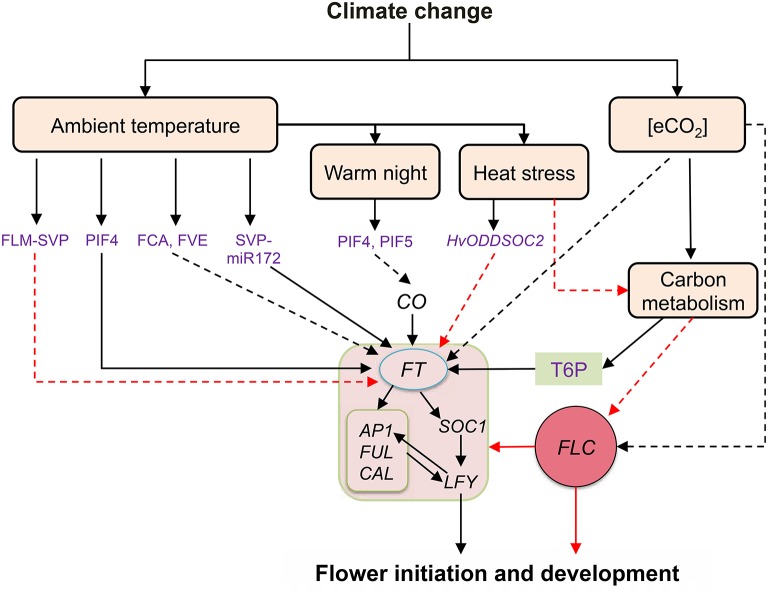Figure 2.
Summary of flowering regulation by ambient temperature and e[CO2]. Solid black and red arrows represent definite positive and negative interaction, respectively whereas broken black and red arrows depict plausible positive and negative interactions, respectively. Ambient temperature regulates FT expression by different mechanisms including PIF4 dependent and independent pathways. Warmer night temperature could induce early morning flowering by accumulating PIF4, PIF5 which regulate CO mediated FT expression. Heat stress may affect flowering events by hampering carbon metabolism and sugar signaling or by inducing floral repressor HvODDSPC2. Conversely, e[CO2] may directly regulate FT expression through floral repressor FLC or alternatively, positive impact of e[CO2] on carbon metabolism and sugar signaling may induce flowering pathway genes by suppressing FLC expression. Major flowering pathways genes affected by temperature and e[CO2] are represented in the box in the center. Abbreviations: AP1, APETALA1; CO, CONSTANS; CAL, CAULIFLOWER; FLC, FLOWERING LOCUS C; FLM, FLOWERING LOCUS M; SVP, SHORT VEGETATIVE PHASE; FT, FLOWERING LOCUS T; FUL, FRUITFULL; HvODDSOC2, A MADS-box ßoral repressor; LFY, LEAFY; PIF4, PHYTOCHROME INTERACTING FACTOR 4; SOC1, SUPRESSION OF OVEREXPRESSION OF CONSTANS 1; T6P, trehalose-6-phosphate.

